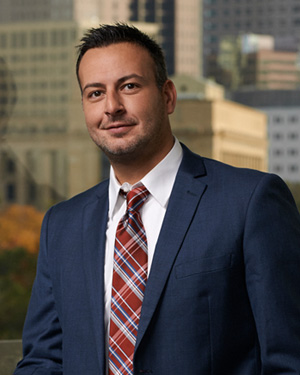Members of the lesbian, gay, bisexual, and transgender (LGBT) community are productive members of society who regularly face ignorance, hatred, and prejudice. As with members of the heterosexual community, they are people who have families, friends, careers, fears, and hopes.
Unfortunately, the hostile sentiments of certain people often result in crimes against LGBT individuals. These crimes can range from discrimination to physical violence and are often perpetrated for no other reason than the victim’s sexual orientation or gender identity. The frequency of these crimes can fluctuate depending on factors such as the country’s current political climate and the passing or blocking of discriminatory or anti-discrimination laws.
To help prevent people from becoming victims of these crimes, all people must recognize and acknowledge their existence and take action to prevent them from occurring.
Hate Crimes
Many of the crimes that LGBT individuals face are categorized as hate crimes. Hate crimes have a long history in the United States. They are most often associated with violent acts against ethnic minorities, but they are broadly defined as crimes that are motivated by bias.
The Federal Bureau of Investigation specifically defines this type of crime as “a criminal offense against a person or property motivated in whole or in part by an offender’s bias against a race, religion, disability, sexual orientation, gender, or gender identity.” Hate crimes often involve violence such as murder, beatings, or destructive actions such as vandalism of public or private property or arson.
Hate speech, however, is not considered a hate crime, as it is protected by the First Amendment right to freedom of speech. These types of crimes often have a strong negative impact on the victims, leaving them traumatized and afraid.
- LGBT People Are More Likely to Be Targets of Hate Crimes Than Any Other Minority Group
- The Extraordinarily Common Violence Against LGBT People in America
- 11 Facts About Hate Crimes
- Hate Crimes and Violence Against Lesbian, Gay, Bisexual, and Transgender People
- Talking About Inclusive Hate Crimes (PDF)
LGBT Rights
In the United States, everyone should benefit from the same basic rights. This includes the right of students to attend school without fear of bullying or harassment from other students or teachers. People should have the right to workplace protections and should not be discriminated against when it comes to housing.
Unfortunately, people who identify as gay, lesbian, bisexual, or transgender are often faced with discriminatory practices in these and other areas. In some states, there are no laws in place to ensure these rights. There have been significant victories, however, such as court decisions confirming the legal right to marry in every state in the U.S.
- Sexuality Is Not a Crime
- ACLU of Minnesota: LGBT Rights
- Know Your Rights: Survivors of Violence
- LGBT Rights
- Background on LGBT Rights
- Human Rights Watch: LGBT Rights
- Gay Rights Timeline: Key Dates in the Fight for Equality
- LGBT Rights and Milestones
- Cincinnati Sex Crime Lawyer
- Timeline: Milestones in the American Gay Rights Movement
LGBT Resources
Numerous resources are available to help people with crime-related issues and concerns. Some of these resources are state- or city-specific, while others are designed to offer support, assistance, and information on a national level. LGBT resources may be nonprofit organizations, community-run efforts, or offered by the government. Many of them are conveniently available online, where interested persons can find information such as hotlines or fact sheets.
- Anti-Violence Project: Get Support
- Community United Against Violence: Resources
- National Resource Center on LGBT Aging: Intimate Partner Violence and Domestic Abuse
- Trevor Support Center
- Equality Michigan: Get Support
- LGBT National Help Center
- LGBT Crime Victim Assistance
- Protecting the Rights of Lesbian, Gay, Bisexual, Transgender, and Intersex (LGBTI) Individuals: Fighting Discrimination
- The National Domestic Violence Hotline: LGBTQ Relationship Violence
Statistics
According to the FBI’s latest hate crime statistics, which analyzed roughly 5,818 single-bias crimes, 18.1 percent cited sexual orientation bias as the motivation, while 2.0 percent were the result of bias against gender identity. There were also 5,850 hate crimes committed in 2015. For single-bias hate crimes, 17.8 were motivated by bias against sexual orientation and 1.7 percent by gender identity bias.
According to statistics for LGBTQ teens, researched by our drug crime attorney in Cincinnati, show that they are more likely to report violence and bullying than other students. According to CDC statistics, 61.1 percent of these teens feel unsafe while in high school. Additionally, 28 percent reported being injured or threatened with a weapon while attending school. Violence is also an issue when it comes to dating, as roughly 29 percent of gay and lesbian students have been subject to dating violence.
- FBI Hate Crime Statistics 2015 (PDF)
- LGBT Bullying Statistics
- LGBT Youth and Experiences With Violence
- Sexual Assault in the Transgender Community: The Numbers
- LGBT Proportion of the Population Map
Laws
A number of laws exist to prevent hate crimes from occurring. In 2009, President Barack Obama signed a hate crime bill called the Matthew Shepard and James Byrd Jr. Hate Crimes Prevention Act of 2009. This law served several important purposes. First, it added gender, sexual orientation, gender identity, and disability into federal hate crime law. It was also designed to help states and local jurisdictions with the investigation of hate crimes. The law is also meant to assist with the prosecution of these crimes through technical help and funding.
Most states have hate crime laws in effect, although they vary in what they cover. California, for example, covers sexual orientation and gender identity, while Texas only covers sexual orientation. Other states are more limited; for instance, Oklahoma does not cover either sexual orientation or gender identity in its hate crime laws. Five states in the U.S. have no existing hate crime laws.
- Obama Signs Hate Crimes Bill Into Law
- Hate Crime Laws
- An Introduction to Hate Crime Laws (PDF)
- Map Shows Where Being LGBT Can Be Punishable by Law
- Safe Schools Laws
- Lesbian, Gay, Bisexual, and Transgender Disparities Reduction Act
- How the Law Protects LGBTQ Youth
- The Matthew Shepard and James Byrd, Jr., Hate Crimes Prevention Act of 2009
- The Reason North Carolina’s Anti-LGBT Law is in the Spotlight Now (Video)
- North Carolina Lawmakers Leave LGBT Law Mostly Intact
Find assistance in:
- Criminal law
- OVI defense law
- Domestic violence defense
- Drug crime attorney representation
- Gun crime lawyer representation
- Theft crime law
- Sex crime defense law
This article was last updated on Tuesday, October 10, 2017.



















